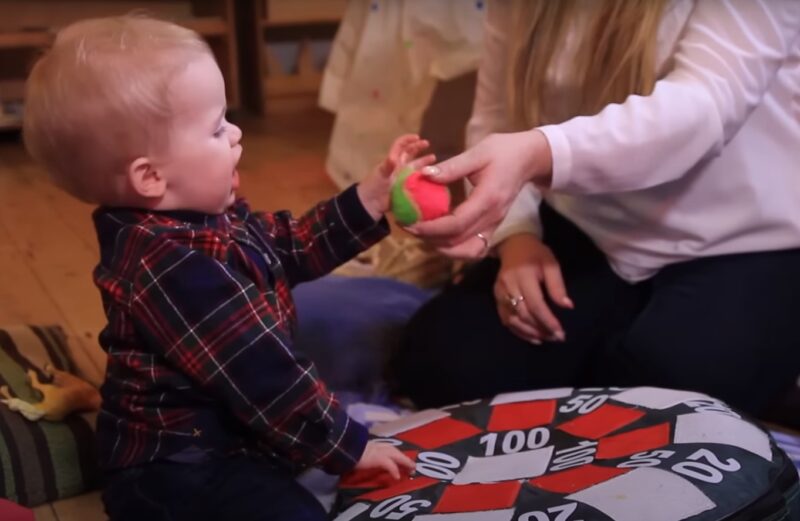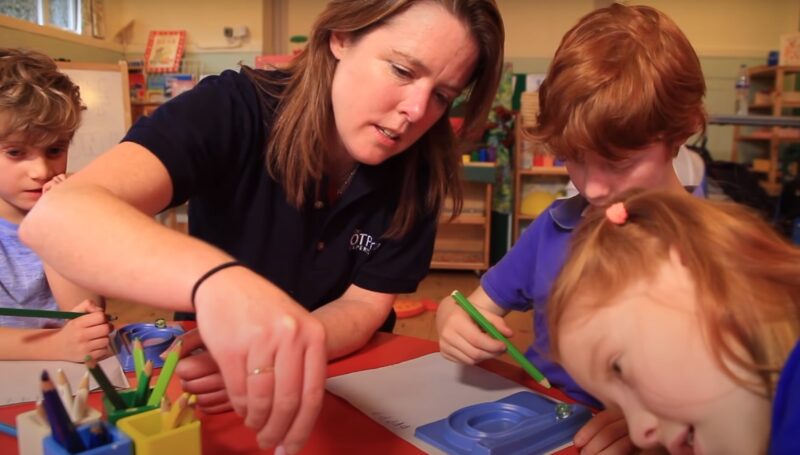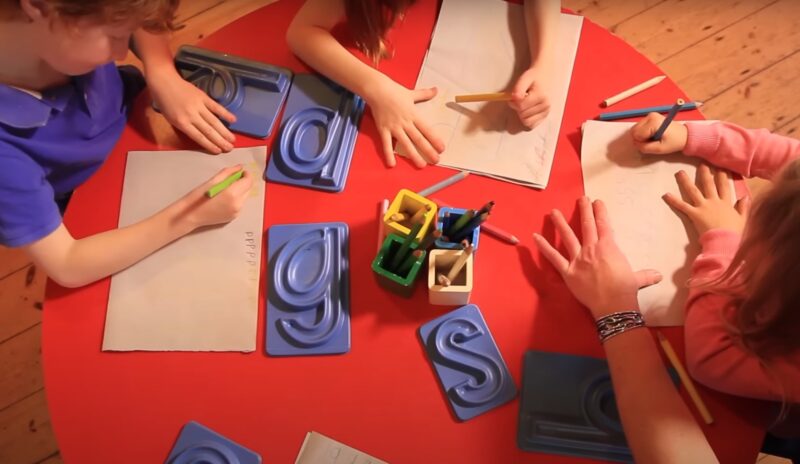Occupational therapy (OT) is a vital branch of healthcare, often overlooked in discussions about child development and wellness. While adults might seek occupational therapy to recover from injuries or manage disabilities, children’s needs are distinct.
In pediatric OT, the focus is on enabling young individuals to perform daily activities or “occupations” effectively, which in this context refers to play, learning, and social interaction. Understanding the importance of occupational therapy for children is crucial for parents, educators, and healthcare professionals.
Key Takeaways
- Occupational Therapy (OT) is essential in aiding children’s developmental, physical, sensory, and motor skills.
- Early identification and intervention in OT can significantly improve outcomes for children with various challenges.
- OT plays a critical role in assisting children with developmental delays and physical disabilities, focusing on independence and skill building.
- Sensory integration therapy within OT helps manage sensory processing disorders, enhancing focus and social interactions.
- The collaborative nature of OT, involving parents and professionals, is key to its success.
- Long-term benefits of OT include enhanced academic performance, social skills, and overall quality of life.
The Scope of Pediatric Occupational Therapy

Pediatric occupational therapy aims to aid children in developing the skills necessary for a successful and independent life. This involves addressing physical, cognitive, sensory, and motor skills. The therapy is tailored to each child’s needs, ensuring a unique approach that considers their specific challenges and strengths.
OT assists children in overcoming developmental delays, physical disabilities, sensory processing disorders, and various other challenges that can impact their ability to perform everyday tasks.
Identifying the Need for Occupational Therapy
Recognizing the signs that a child might benefit from occupational therapy is vital. Common indicators include difficulties with fine motor skills like writing or buttoning shirts, problems with gross motor skills such as jumping or running, challenges in coordinating movements, sensory processing issues, and struggles with daily activities like dressing or eating.
Behavioral challenges, social interaction difficulties, and learning problems can also signal the need for OT. Early identification and intervention can significantly enhance outcomes for children facing these challenges.
Developmental Delays

Children with developmental delays often find occupational therapy particularly beneficial. These delays can manifest in various forms, such as late walking or talking, difficulty in social interaction, or challenges with self-care tasks.
OT practitioners work with these children to build the skills they’re lagging in, using play-based therapy and other engaging activities. This approach not only helps in skill development but also boosts the child’s confidence and self-esteem.
| Developmental Area | Examples of Delays |
|---|---|
| Motor Skills | Late walking, difficulty in coordinating movements, poor balance |
| Speech and Language | Late talking, difficulty in understanding language, poor articulation |
| Social and Emotional | Difficulty in forming relationships, lack of interest in social play, challenges in understanding emotions |
| Cognitive | Problems with problem-solving, delays in learning numbers or letters, poor memory |
| Self-care | Struggles with dressing, eating, toileting independently |
Physical Disabilities
Children with physical disabilities can face numerous challenges in their daily life. Occupational therapy plays a crucial role in helping these children gain independence.
Therapists work on strengthening muscles, improving coordination, and teaching alternative ways to perform tasks. They also advise on assistive devices and environmental modifications to make daily activities more accessible. For children with physical disabilities, OT is not just about skill development; it’s about empowering them to lead more independent and fulfilling lives.
Sensory Processing Disorders
Sensory processing disorders can significantly affect a child’s life, making ordinary experiences overwhelming or distressing. Occupational therapists are skilled in helping children with these disorders. They use sensory integration therapy, a technique that helps children manage and respond to sensory information more effectively.
This therapy can involve various activities like playing with different textures, balance exercises, or activities that help with body awareness. Improved sensory processing can lead to better focus, decreased anxiety, and improved social interactions.
| Type of Disorder | Characteristics | Examples |
|---|---|---|
| Sensory Modulation Disorder | Over-responsiveness or under-responsiveness to sensory stimuli, sensory seeking behaviors | Avoidance of certain textures, excessive touching of objects, discomfort with loud noises |
| Sensory-Based Motor Disorder | Dyspraxia (difficulty planning and executing movements), postural disorders | Clumsiness, poor coordination, difficulties with fine and gross motor skills |
| Sensory Discrimination Disorder | Difficulty interpreting and organizing sensory information from different senses | Problems with differentiating sounds, textures, or visual inputs; difficulty in judging distance or spatial relationships |
Social and Emotional Development
Occupational therapy also significantly impacts a child’s social and emotional development. Therapists work on skills such as emotion regulation, social interaction, and play skills.
For children who struggle in these areas, OT can provide them with the tools they need to form relationships, understand their emotions, and interact appropriately in social settings. This aspect of OT is particularly important for children with autism spectrum disorder or other social communication challenges.
Collaborative Approach

An important aspect of pediatric occupational therapy is its collaborative nature. OT involves working closely with parents, teachers, and other professionals to create a supportive environment for the child.
This teamwork ensures that the child’s needs are met across all settings, be it at home, school, or in the community. Parents and caregivers are often given strategies and activities to do at home, which reinforces the skills learned during therapy sessions.
Measuring Progress in Occupational Therapy
Measuring a child’s progress in occupational therapy is not always straightforward, as each child’s goals are unique. Progress is often monitored through observational assessments, standardized tests, and feedback from parents and teachers. Improvements in daily functioning, increased participation in activities, and enhanced skill levels are all indicators of progress. It’s important to remember that progress can be slow and incremental, requiring patience and persistence from everyone involved.
The Long-term Impact of Occupational Therapy

The benefits of occupational therapy can extend far beyond childhood. By addressing challenges early on, OT can set the foundation for a more independent and fulfilling life.
Skills learned in occupational therapy can improve academic performance, boost social interactions, and enhance overall quality of life. For many children, occupational therapy is a critical step in overcoming obstacles and achieving their full potential.
FAQs
At what age can a child start receiving occupational therapy?
Occupational therapy can be started at any age, depending on the child’s needs. Even infants can benefit from OT, especially those with developmental delays or born with physical disabilities. Early intervention is often more effective, but children of any age, including teenagers, can start occupational therapy and see significant benefits.
How long does a child typically need to be in occupational therapy?
The duration of occupational therapy varies greatly depending on the child’s individual needs and goals. Some children may only need OT for a few months, while others might benefit from ongoing support for several years. Progress is continuously evaluated, and therapy duration is adjusted accordingly.
Can occupational therapy help with behavioral issues?
Yes, occupational therapy can help address certain behavioral issues, especially when they are related to sensory processing disorders, frustration with communication challenges, or difficulties in mastering daily tasks. OTs work on developing coping strategies and skills that can reduce behavioral problems.
What role do parents play in their child’s occupational therapy?
Parents play a crucial role in their child’s occupational therapy. They are often involved in setting goals, providing information about their child’s needs and progress, and implementing strategies at home to reinforce what is learned in therapy sessions. Effective OT often requires a collaborative approach that includes consistent communication and cooperation between therapists and parents.
Is a referral from a doctor necessary to start occupational therapy?
This depends on the healthcare system and insurance policies in your region. In many cases, a referral from a pediatrician or other healthcare provider is required for insurance to cover the therapy. However, some private occupational therapists may accept clients without a referral.
How does occupational therapy differ from physical therapy for children?
Occupational therapy focuses on improving a child’s ability to perform daily tasks and activities, which includes fine motor skills, cognitive abilities, and sensory processing. Physical therapy, on the other hand, is more focused on improving physical functions, such as strength, mobility, and gross motor skills.
Final Words
Occupational therapy for children is a dynamic and essential field, playing a crucial role in the lives of many young individuals. By addressing a wide range of developmental, physical, sensory, and social challenges, OT helps children to not only perform daily tasks more effectively but also to enjoy a higher quality of life.
